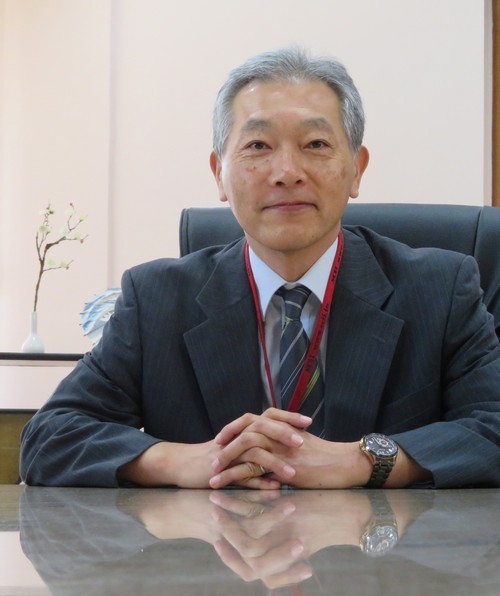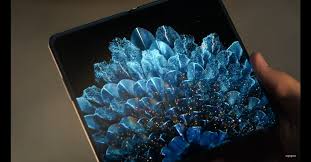System Consultant Information India (SCII) is an IT company creating a business environment that blends Indian talent with Japanese expertise. SCII was established in India in December 2005 and is a 100% subsidiary of System Consultant Co. Ltd (KSC) in Japan. In an interaction with N V Vijayakumar, SCII Director Junichi Kamiyama explains that the basic philosophy of the company is not simply to outsource work to the India centre for cost-cutting but rather to provide the best services to the clients globally by providing support from the India centre.
Can you share your experience working with Indian IT talents at the helm of affairs at System Consultant Information India (SCII)?
System Consultant Co carries a legacy of 53 years. System Consultant Information India (SCII), the Offshore Development Center) of the Tokyo-headquartered parent company that is spread is over 7 acres in Tumakuru, is looking at opportunities to nurture talent with a global outlook has worked with various global geographies.
Besides back-office business transformation, software development for Japanese companies, BI tools development, SCII also focuses on global talent development and training (Japanese Professionals), System operation & monitoring, Training Centre/Internship ( Aspiring IT Engineers / Engineering Undergraduates ), and R&D in collaboration with Engineering Universities in areas like AI, Machine Learning, VR/AR etc.
When we hire a fresher we train them and share all the know-how. And then we work together for definitive outcomes. So, it is with lots of emphasis on developing Japanese thought processes and culture as we give primacy to quality.
We groom fresher’s to become complete system engineers who understand the Japanese way of business as well as skilled in the latest technology to address the current needs of the customers. We do not simply hire and put them in projects. But before that, we emphasise more at grooming an efficient workforce by giving appropriate training to them. After completing the extensive training in the technologies along with Japanese work culture, we assess all the freshers and put them on various projects based on their capabilities as well as overall skills development.
How you are grooming freshers at your Tumkuru campus?
Here you should understand that we are not having a one-way approach. Even freshers hired in Japan are brought to Tumkur centre and are given three months of training on working in global setup and get accustomed to developing as the global workforce. Hence, it is a mutual approach to groom the global workforce by adopting positive aspects of both Japanese and Indian work culture. More than 40% of Japanese employees are trained at Tumkur center.
It is more like working together and not simple project delivery. Indian and Japanese employees can work together. Since we are working with this model we are facing many hurdles. However, we try to meticulously resolve these issues and gain lot of experience. At SCII presently the centre has around 125 engineers working on different projects. However, our facility has a seating capacity of up to 1500 and currently, available space can be used for setting up ODC, R&D Projects, Testing labs etc either in a standalone manner or through our resource capabilities.
We have started sharing our experiences with various clients also for the past many years. Some of the Japanese companies try to do business with India but fail. Our experience in building a cultural bond with India helped the company to build a sustainable relationship mutually for achieving our shared value and goal.
You are helping Japanese companies in providing various IT solutions. How you are helping Japanese companies in resolving their IT requirement?
We gained our knowledge working and started delivering full-stack IT solutions to Japanese companies in their digital transformation. We have started targeting Japanese companies working in India as well. We have a collective approach. Normally, our experienced engineers of KSC in Japan interact with the customers to understand their problems. After understanding the customers’ problem, KSC team communicate with SCII engineers to find collective solutions for the customers. So we also will get a clear picture of the problem and the solutions to be delivered.
But when it comes to Japanese companies in India we mainly interact with the management people who do not have a background in IT. So, they don’t have much idea on the possible IT solutions for their problems. Therefore, we have started a new vertical where we collaborate as partners to the client and share the know-how.
We help them to identify the best solutions suited for them so that their processes become smother and visible for the management. We have gained good experience in working in Indian environments we are sharing with Japanese companies, especially the local business environment and the problems they face. We give them small business solutions and help them reach a comfort level.
What is the USP of System Consultant Information India (SCII) so that it will help you to stand out of the crowd?
Our approach is very different from the conventional IT company. These companies will come to your office and share info on the solutions they have. These companies will insist on incorporating these solutions for delivering services. But here our approach is different as we try to understand their problems first.
Then we propose multiple possible solutions and work with the clients to finalize the best as per their business need drive. We start in a small way and gradually move step by step. And thus we expand our scope of the work. Clients are happy with this approach as we are not pushing them without understanding their problems.
What are all the solutions you have developed for your clients?
We work closely with our clients and there is the primary DX solution as it helps in our client’s digital journey. This is primarily for digitalizing their back-office services. This solution is delivered after thoroughly understanding the day-to-day problems of the client in their business operations. We come up with appropriate solutions which will help to achieve desired outcomes. To achieve this, we first try to understand whether there is data visualization to address the client’s requirements.
Here we assess how processes are being carried out. In the second level, we try to understand the system requirements to take the decision. This is how the overall solutions start with. Our approach is not feasible for large IT companies and other solution providers. So we start by identifying their problems and delivering small solutions and then give small advisories so that processes can be smoothened. This is how we approach differently from conventional IT companies. We also collaborate with Engineering Universities or colleges for R&D projects and come up with advanced solutions in the area of AI/ ML/ NLP etc. for our clients.
As a company, our basic philosophy is that our workforce is very important. We want to retain our staff for a longer time and associate with them to achieve future goals. Even if there is no projects we keep them and train them. We provide our employees with a long-term career path. We will continue with this approach and deliver services to our clients. I joined this company when I was 22 years and now I am 59.
Any company’s performance is depended on its revenues and profits. Can you share details of the company so far?
As a policy, we are not supposed to share our financial performance details. We have more than 300 staff working at our headquarters in Tokyo and around 150 employees in Bengaluru. We want to say that fiscal wise we are a healthy company and sustaining our growth momentum.
How do you assess the performance of this Bengaluru center?
Till now we have been receiving our projects from headquarters. But once we started DX solutions we have onboarded clients from India. We have set a target of achieving 30% of this centre’s revenue from the local market and by five years take it up to 50%. Our goal is to make this center a sustainable independent entity in the long run.
Our 100% clients are Japanese companies. So we are looking at aggressively tapping that market requirement. Then we are also a product company and these products will be sold both in Japan and India. We primarily focus on Japanese companies and then diversity into other non-Japanese companies also as an IT services company. After maturing our operations by delivering services to clients in India we look at addressing opportunities in other global markets.
But we are working with clients who have a global presence and serve them from here. For example, our product Canvas is being used by clients all across the globe. We engage with our clients in such a way that their problems can be solved rather than simply selling our solutions. If we won’t work with this strategy even our engineers will not further improvise the product to provide better solutions and resolve our clients’ problems in a proactive way.





